We visit a ramen bar in Croatia, meet a whole new version of ramen we can’t wait to make at home
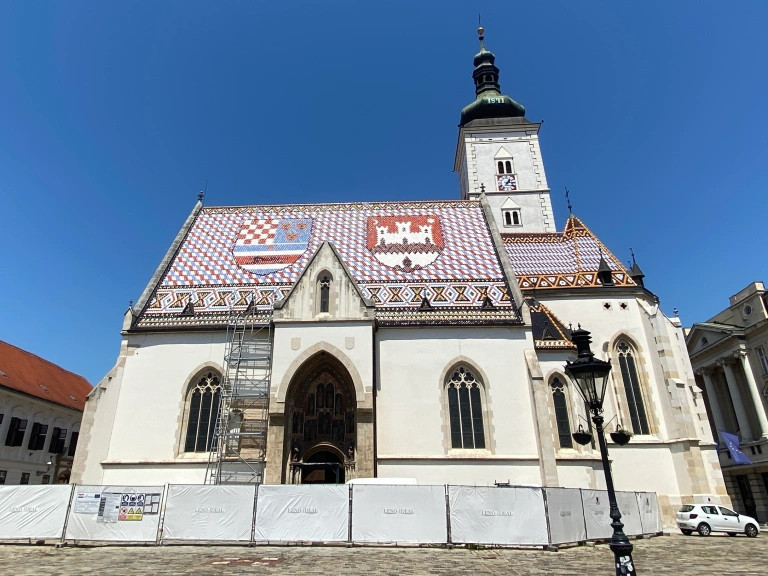
This ramen was all kinds of unique…and we couldn’t help but love it!
Our Japanese-language reporter and world traveler Ikuna Kamezawa visited Croatia recently, where she stayed in the city of Zagreb. Though the capital of Croatia, Zagreb is a very quiet place where the cost of living is very inexpensive. Ikuna found it to be a great place to take a nice, leisurely, relaxing vacation.
However, as often happens when on an extended vacation, Ikuna started to get homesick for Japanese food. But in a smaller city like Zagreb, would she be able to find any Japanese restaurants? As an experiment, she did a quick Google Map search for ramen.
When you search for “ramen restaurants” in other countries, the results often include Chinese restaurants or sushi restaurants that also serve ramen, so Ikuna made sure to specify in her search that she wanted a “ramen specialty restaurant.” To her surprise, she got one hit, and it looked like a restaurant that exclusively served ramen.
Ikuna had tried ramen in other places in Europe, like Paris and Spain, so she was eager to see Croatia’s take on the popular noodle dish. She immediately got her GPS running and headed over.
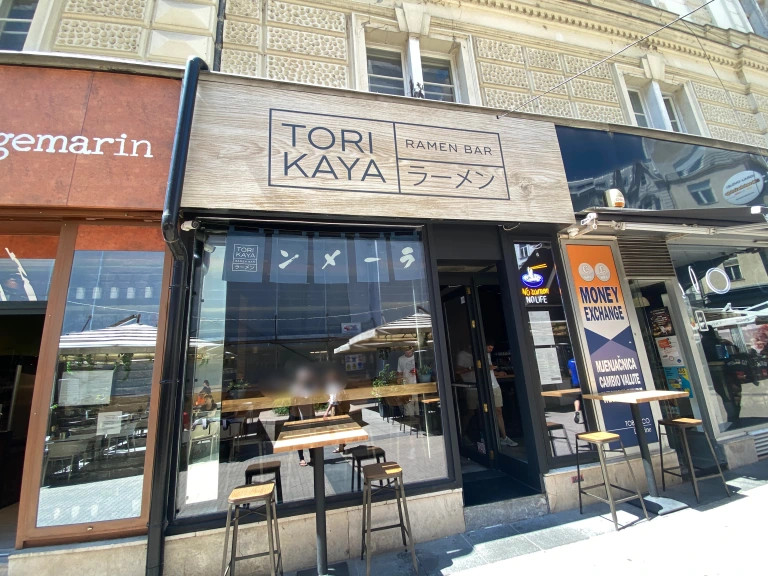
The restaurant was called Ramen Bar Torikaya and was located in a prime spot in Zagreb. The noren curtain hanging in the window had “ramen” written in Katakana on it, which was a sight for Ikuna’s sore Japanese eyes.
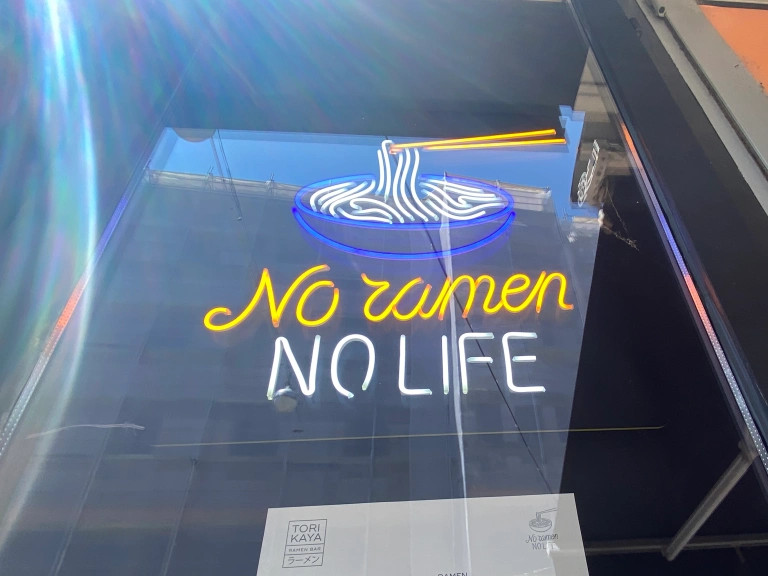
The stylish “No Ramen NO LIFE” neon sign was also touching. That people in other countries would feel that way about ramen…Ikuna couldn’t help but be moved.

The interior of the restaurant was very trendy…
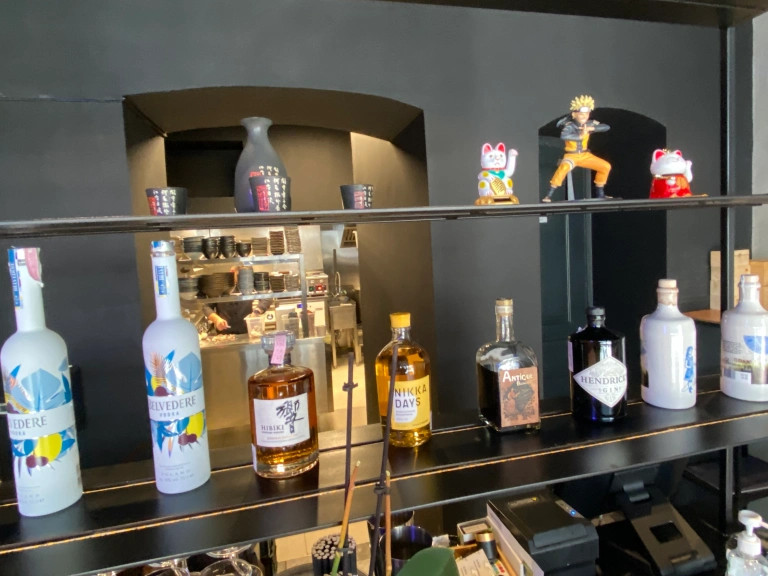
In fact, without the ramen signs or the Suntory Whisky Hibiki bottle standing on a shelf, you might not even know it was a Japanese restaurant.
Unexpectedly, the menu was pretty pricey for Zagreb. Gyoza, for example, was 60 kuna (about 1,102 yen or US$8.19) and the Miso Ramen was 90 kuna (1,653 yen).
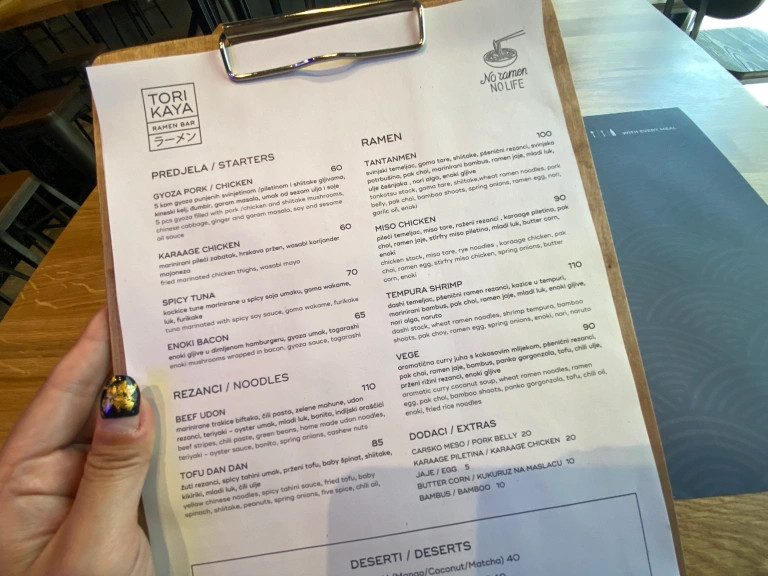
Ikuna decided to splurge and get the most expensive item on the menu: the Shrimp Tempura Ramen (110 kuna [2,020 yen]). In Japan it’s pretty unusual to combine tempura with ramen–that’s usually done with soba or udon, which have much lighter broths–but these days it’s become kind of trendy to add fried foods like chicken karaage to ramen, so Ikuna surmised it was probably just following the trends.
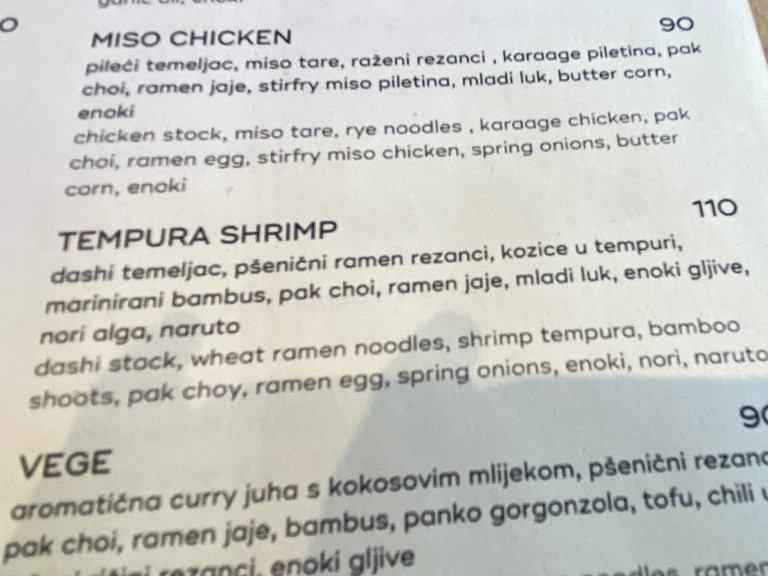
What arrived at her table just 15 minutes later was this interesting combination:
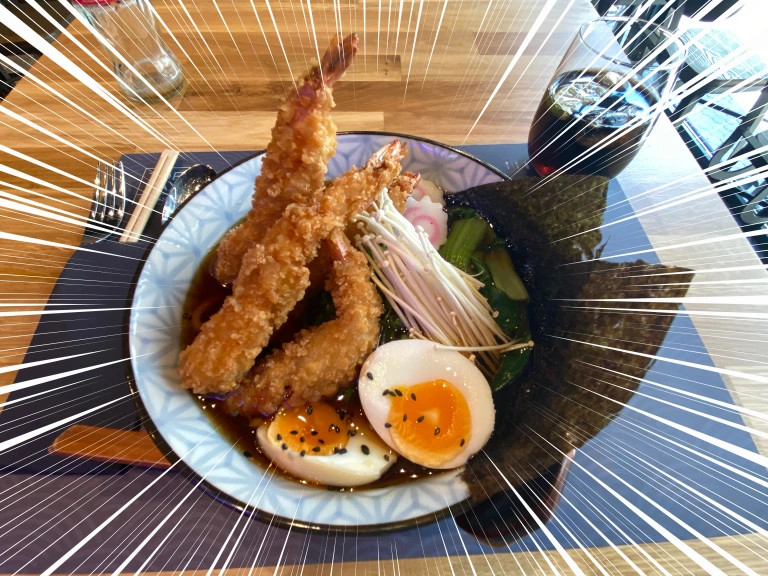
It was far more lavish than she had expected! But in terms of traditional ramen, this bowl was quite unusual. To start with, the “shrimp tempura”, which would have been unique in itself, was actually “ebi fry“, which is an entirely different category of fried food, and which no one in Japan has likely ever tried to use as a topping for ramen.
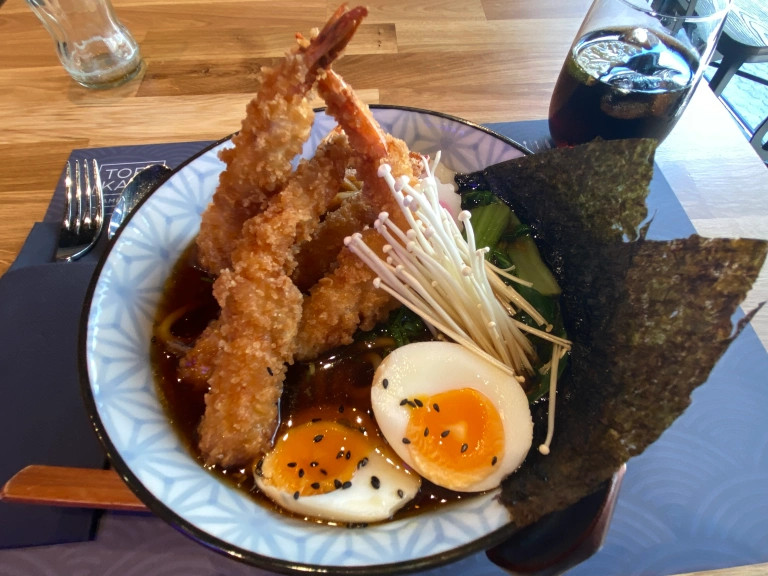
Not only that, but the use of raw enoki mushroom as a topping is nearly unheard of. Despite her surprise, Ikuna thought it made sense from an international standpoint. Enoki mushrooms aren’t a popular food in Europe, so they were probably selected for their “Japanese-ness”. Still, Japanese people don’t really make a habit of eating raw enoki, so Ikuna wasn’t quite sure what to make of it.
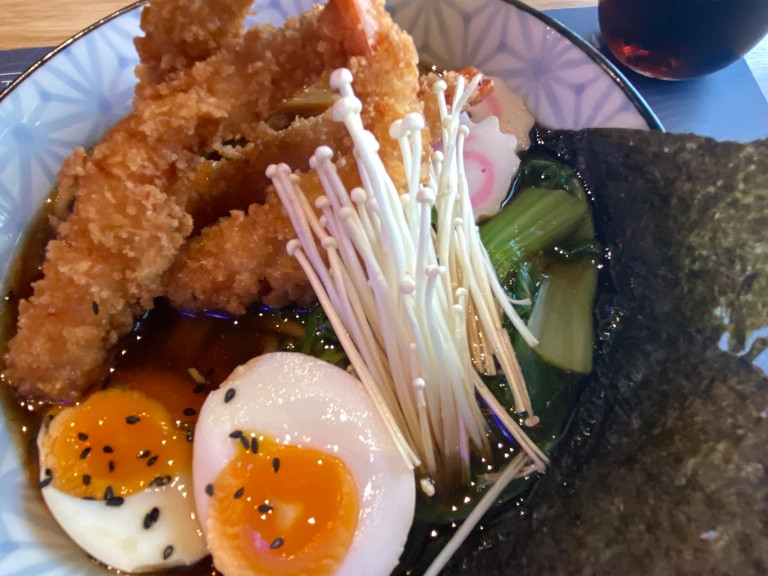
The bowl also had a very pungent odor of dried fish that made Ikuna’s face scrunch up against her will. On close inspection, the culprit appeared to be bamboo shoots cut into strips. Ikuna guessed they came from a can imported from somewhere in Asia. Unfortunately, it was far too stinky to complement the ramen, so the dish lost a point for that.
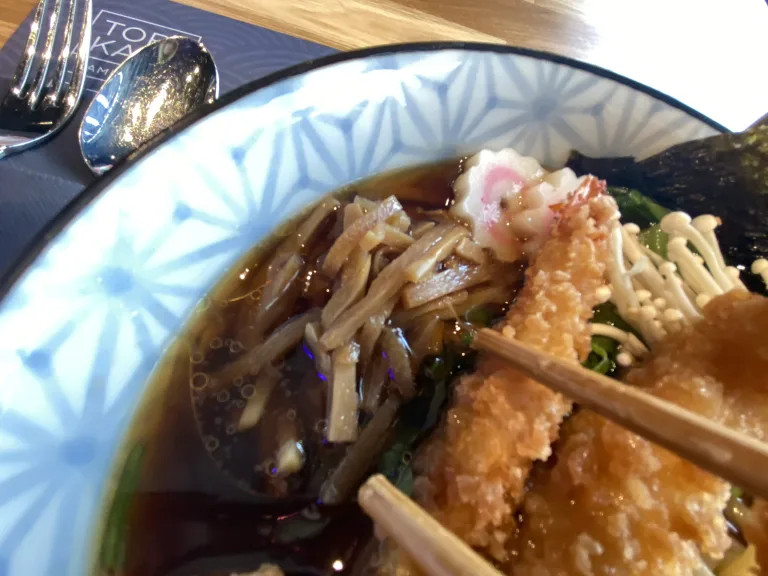
But when Ikuna tasted the soup–avoiding the bamboo shoots–she realized it was actually pretty good! She’d liken it to the broth used in Kamo Nanban Soba, which is made with duck broth. In that sense, since the flavor of the soup was more like a soba tsuyu broth, the addition of the shrimp tempura was a bullseye (even though it was ebi fry and not actually tempura).
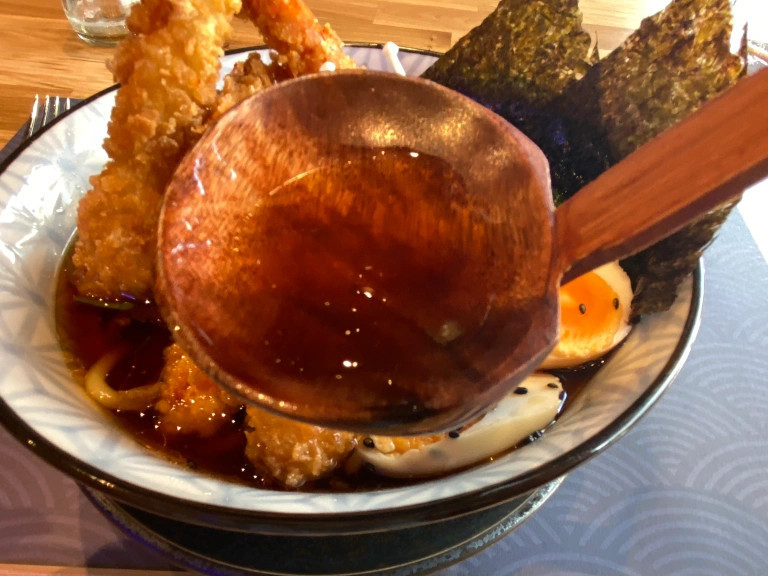
Now for the most crucial part: the noodles. The thick noodles, which must have been cooked from dry, were perfectly al dente. They had a very European feel to them, with a grainy texture that could only come from noodles made with semolina. Ikuna thought they would taste great with a tomato sauce, or topped with ketchup to make a napolitan…
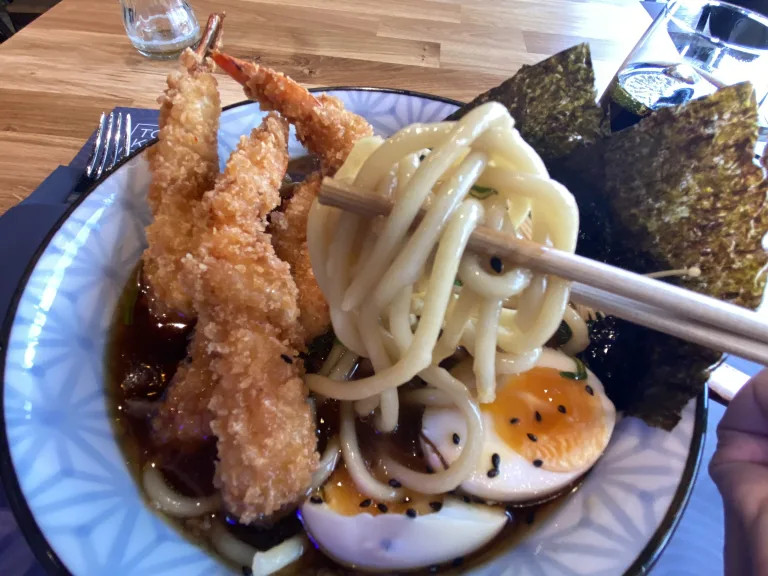
Wait a minute…
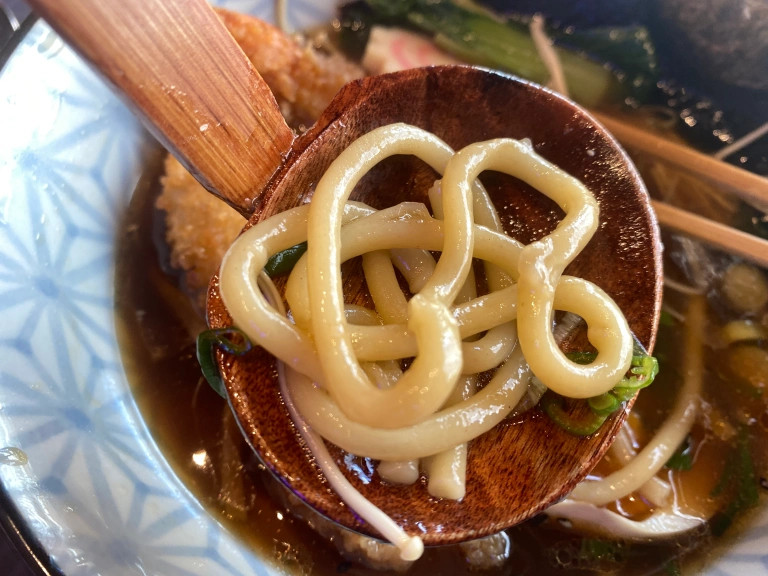
These noodles were pasta!
In the end, the dish didn’t quite meet the mark of “Shrimp Tempura Ramen” and ended up more like “Ebi Fry Pasta”. But that didn’t mean it wasn’t delicious. The fried shrimp, for example, was amazing. It was delightfully crispy, with a nice thick battering, and Ikuna would put them in the top tier of ebi fry, even among those made in Japan. And to get four of them in one dish…Ikuna would have expected that to cost more than 2,000 yen.

And remember the unexpected enoki mushrooms? They were shockingly delicious! They cooked ever so slightly in the heat of the broth and added a really nice crunchy texture to the dish.
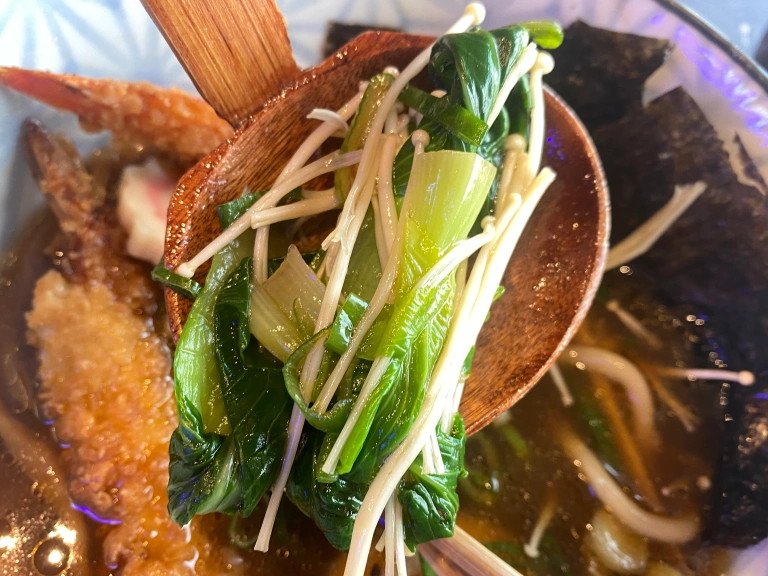
Ikuna had to wonder who had the brilliance to come up with that idea. If someone were to try it in Japan, it would surely take off.
Lastly, despite the noodles being clearly pasta instead of ramen, they were actually super tasty. The more Ikuna ate them, the more she wondered if they’d purposely used pasta noodles instead of ramen. It was simultaneously both curious and delightful.
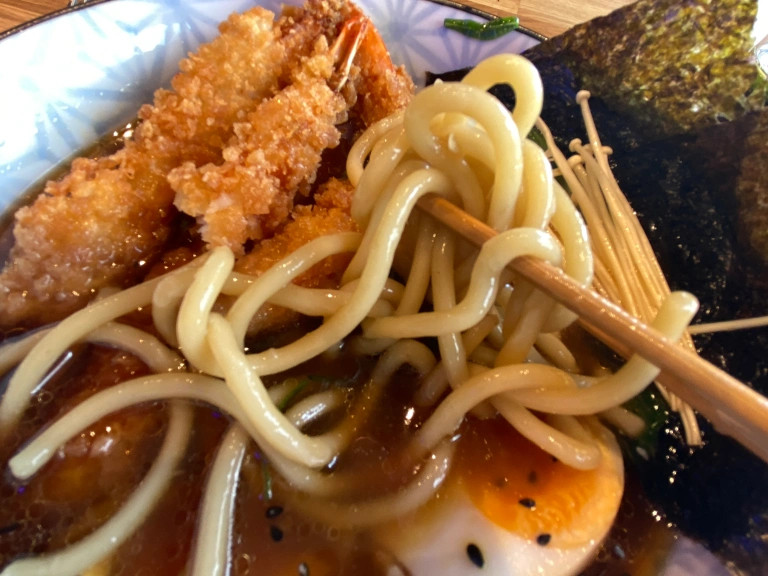
Croatia’s unique take on ramen left such a mark on Ikuna’s heart that she decided to make her own pasta ramen when she returned to Japan. If you find yourself in Zagreb one of these days, make sure you check out Ramen Bar Torikaya to get a whole new ramen experience you’ll never forget!
Images © SoraNews24
● Want to hear about SoraNews24’s latest articles as soon as they’re published? Follow us on Facebook and Twitter!
Credit:

0 comments:
Post a Comment